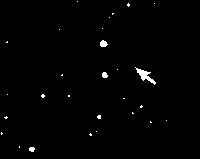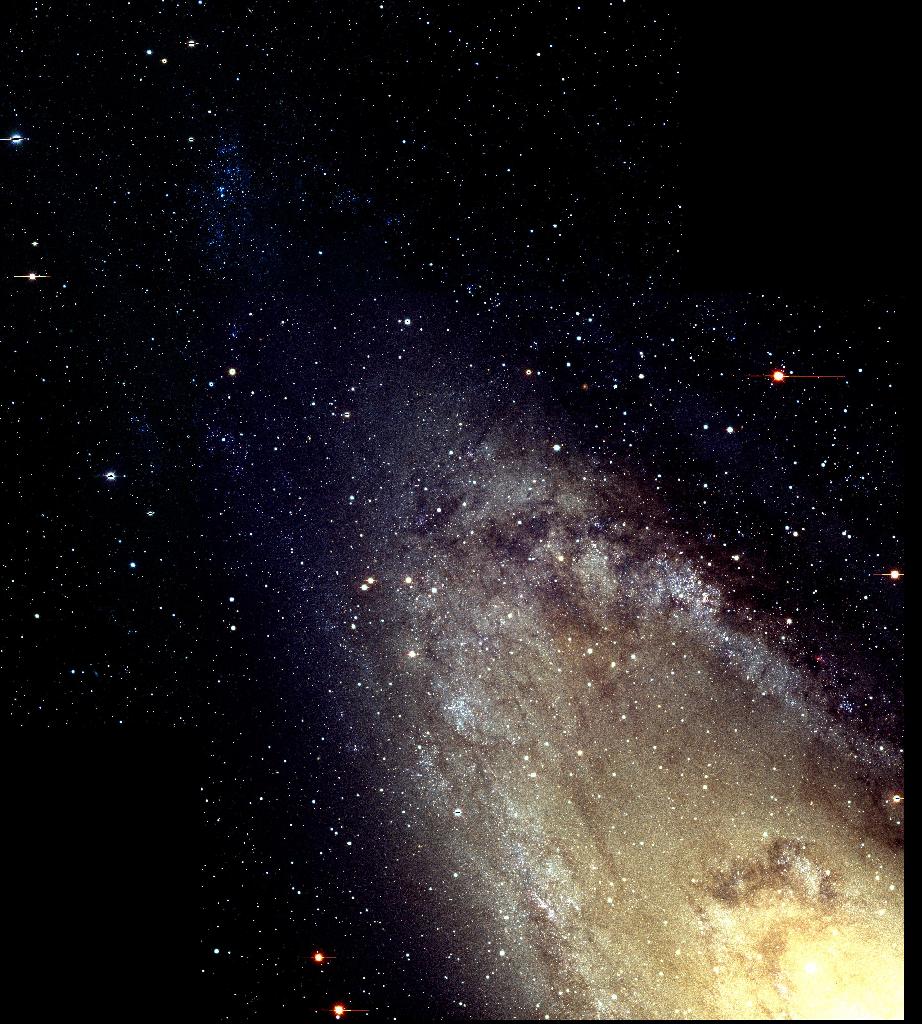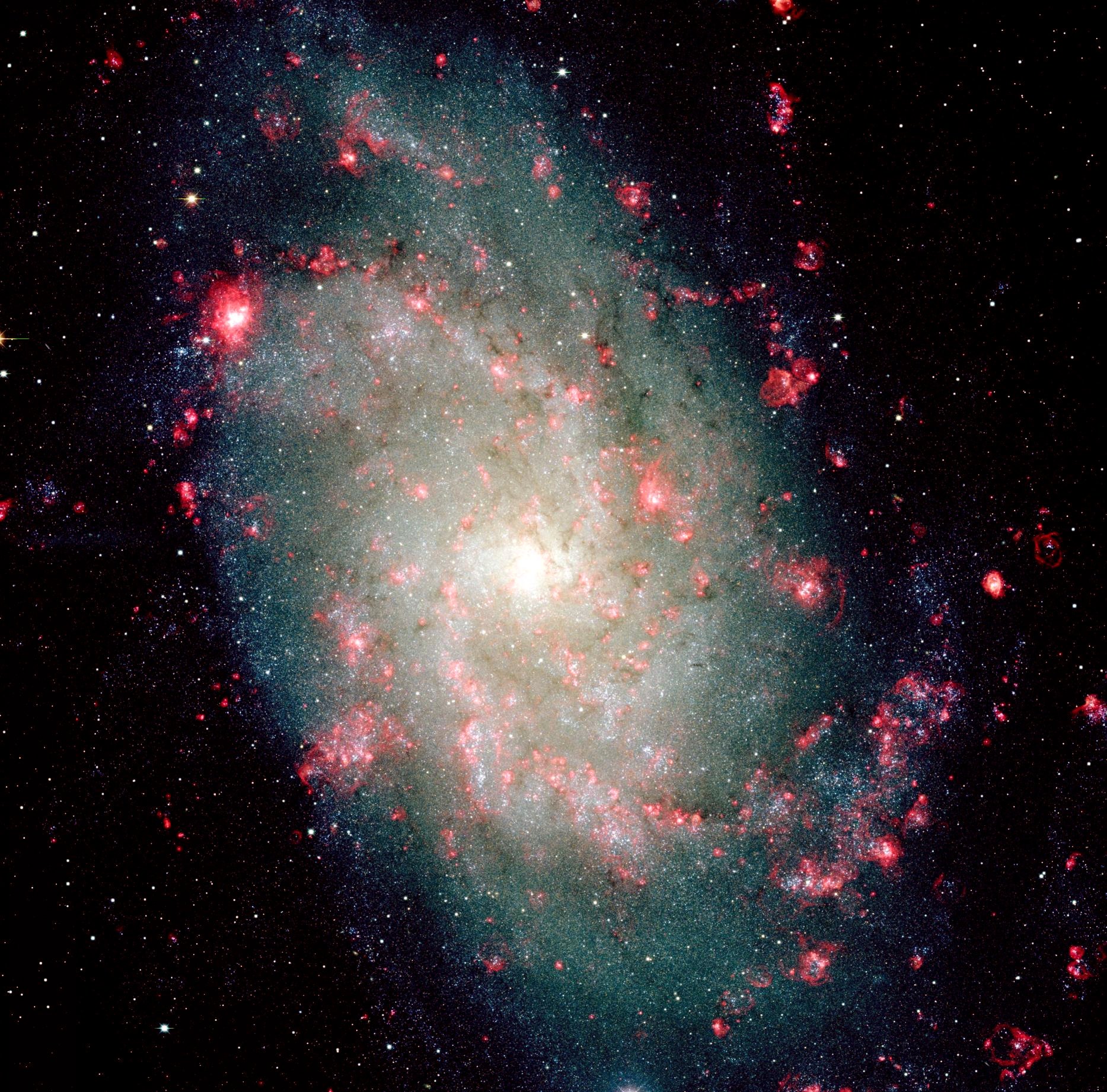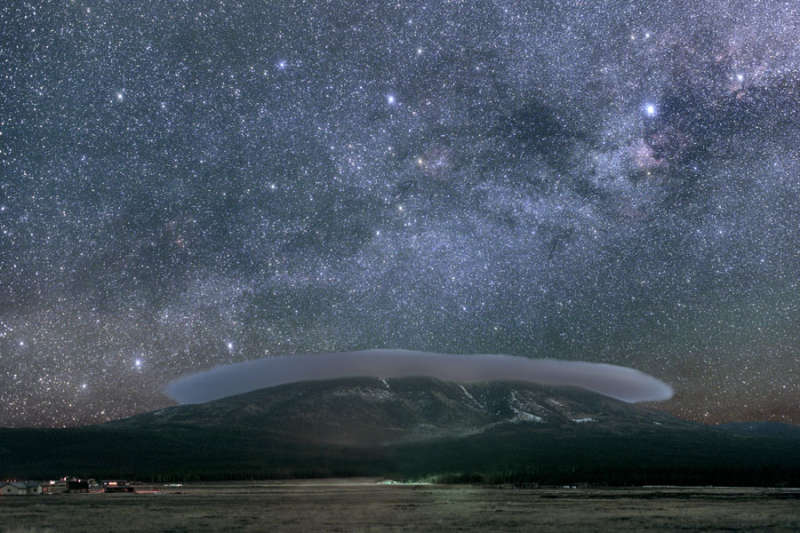Credit: Dan & Cindy Duriscoe, FDSC, Lowell Obs., USNO
It doesn't even look real, does it? But that's an actual photograph from my hometown. On a clear night, of which Flagstaff, Arizona has a plethora, the dark sky is packed with stars. They're almost close enough to run your fingers through, like diamonds on a jeweler's velvet. The Milky Way flows like a river overhead, and during full moons, on frosty midnights, the trees glow with sylvan light. I grew up in a city whose artificial lights don't drown the cosmos.
It's all thanks to Lowell Observatory.

In 1958, Flagstaff passed the world's first ordinance meant to protect the night sky from light pollution. In 2001, it became the first International Dark-Sky City. And that's all due in large part to the Observatory. Astronomers needed darkness to reach distant light: Flagstaff delivered.
In turn, Lowell Observatory keeps delivering the science.
Take a little trip with me, in time, space and space. Let's head up to Mars Hill, Anderson Mesa, and Happy Jack cindercone, where some of the most amazing research into the universe is taking place.
We begin at Mars Hill, where Percival Lowell built his telescope dreaming of a civilization on Mars. To get there, we'll take the nondescript road that runs past the lingerie and wedding boutique, past the city library and up a ridge laid down when northern Arizona was busy being volcanic. This is where one man's whimsy laid the foundation for generations of science and the discovery of Pluto.

Lowell wasn't thinking dwarf planets when he built his 24-inch telescope. He was thinking canali. He'd seen maps drawn by the Italian astronomer Giovanni Schiaparelli, and to him, they looked like artificial structures. Sitting alone in the cold, dark Flagstaff nights peering through an eyepiece at Mars might have scrambled his brains a bit, or perhaps he wasn't a whole egg to begin with, but eventually he'd created a story about a dessicated civilization on an alien world, and the public lapped it right up.
Scientists didn't. In an effort to boost his astronomy creds, Lowell turned to the hunt for Planet X. He hired a team of Harvard mathematicians and went to work calculating the unknown planet's mass and orbit from its gravitational tugs on Neptune. His teams took photographic plates of the area where they suspected the planet was hiding, and the hunt was on.
 Lowell died before his prey was sighted by Clyde Tombaugh. Tiny Pluto looked like a star, but sharp-eyed Claude saw it change positions between plates, and he knew for damned sure that stars didn't get up to those sorts of hijinks. Pluto's discovery didn't redeem Lowell's Martians, but it put Flagstaff firmly in the Real Astronomy column, and gave Lowell Observatory a celebrity it carries to this day - even with Pluto's demotion to dwarf planet.
Lowell died before his prey was sighted by Clyde Tombaugh. Tiny Pluto looked like a star, but sharp-eyed Claude saw it change positions between plates, and he knew for damned sure that stars didn't get up to those sorts of hijinks. Pluto's discovery didn't redeem Lowell's Martians, but it put Flagstaff firmly in the Real Astronomy column, and gave Lowell Observatory a celebrity it carries to this day - even with Pluto's demotion to dwarf planet.And it didn't rest on its laurels.

Even before Pluto, Vesto Melvin Slipher was discovering something hinky about the universe.
Vesto and I share a few things in common: we were born in '75 (1875, in his case), hail from Indiana, and got transplanted to Flagstaff. There the similarities end. I doubt I'll be sitting in the Observatory at age 37 looking at a strange shift in the spectral lines of galaxies and realizing there's something huge going on. That discovery of redshift changed our conception of the cosmos: the damned thing was expanding on us. His work allowed Edwin Hubble and Humason to work out Hubble's Law.
Lowell Observatory has an impressive list of other successes racked up: the co-discovery of the rings of Uranus, the three largest known stars, the periodic variation of brightness in Halley's Comet, oxygen on Ganymede, an atmosphere on Pluto, and a plethora of other discoveries. And the astronomy continues apace.
 The Lowell Observatory Near-Earth Object Search keeps an eye out for the next contender for planet-killer. Did you know your chances of dying in an asteroid impact are roughly the same as dying in a plane crash? They do. That's why they search the skies night after night, keeping track of the chunks of rock that could make all of our concerns about the economy, global warming, and who's going to win the next American Idol completely moot.
The Lowell Observatory Near-Earth Object Search keeps an eye out for the next contender for planet-killer. Did you know your chances of dying in an asteroid impact are roughly the same as dying in a plane crash? They do. That's why they search the skies night after night, keeping track of the chunks of rock that could make all of our concerns about the economy, global warming, and who's going to win the next American Idol completely moot.This animation of 7166 Kennedy was compiled from CCD frames taken at Lowell.

Asteroids aren't the only little things they study. The LITTLE THINGS Survey is working hard to figure out how tiny galaxies form stars. Popular attention usually falls on the big, dramatic spirals, but the LITTLE THINGS team knows that seemingly boring dwarf galaxies are fascinating too. Our star formation models don't work for these little guys, yet they've obviously got stars - how, and why, is up to LITTLE THINGS to discover. Their science could revolutionize our ideas about how a star is born.
Lowell's going local with the Local Group Survey. But if you think local equals small, think again: they're studying the Local Group of galaxies, which includes such giants as our own Milky Way and Andromeda. The Local Group spans everything from dwarfs to giants, from clouds to superclusters. The photography coming out of this survey speaks for itself:


At left, we have the Large version of M31 Fields 1 and 2 mosaic; at right, High resolution M33 Center (HII regions emphasized). Incredible, no?
 Getting really local, Lowell is studying comets and making new discoveries about the Kuiper Belt as part of the Deep Eliptic Survey. That belt could well be a fossil of our solar system: studying it could reveal exactly how the Earth came to be and tell us more about the formation of other solar systems. What the Burgess Shale was to evolutionary biology, the Kuiper Belt might prove to be for planetary astronomy. Not to mention, it's the place where comets come from. Comet science for Lowell sure as hell didn't stop with Halley - or Hale-Bopp, for that matter.
Getting really local, Lowell is studying comets and making new discoveries about the Kuiper Belt as part of the Deep Eliptic Survey. That belt could well be a fossil of our solar system: studying it could reveal exactly how the Earth came to be and tell us more about the formation of other solar systems. What the Burgess Shale was to evolutionary biology, the Kuiper Belt might prove to be for planetary astronomy. Not to mention, it's the place where comets come from. Comet science for Lowell sure as hell didn't stop with Halley - or Hale-Bopp, for that matter.As if Lowell wasn't doing enough already, they're b
 uilding the Discovery Channel Telescope at Happy Jack. It's going to be ginormous - the fifth largest telescope in the continental United States. It will pull duty to match its size: searching for Near Earth Objects, the Kuiper Belt, and far beyond to extrasolar planets. Lowell's dream of finding an extraterrestrial civilization may yet come true - or at least, his Observatory may find the world where life like ours is most probable. We can but dream, just as he did.
uilding the Discovery Channel Telescope at Happy Jack. It's going to be ginormous - the fifth largest telescope in the continental United States. It will pull duty to match its size: searching for Near Earth Objects, the Kuiper Belt, and far beyond to extrasolar planets. Lowell's dream of finding an extraterrestrial civilization may yet come true - or at least, his Observatory may find the world where life like ours is most probable. We can but dream, just as he did.And that dream, via Lowell's already stellar public outreach programs and now the new opportunities for science education with the DCT, is expanding like our own universe. Not bad for a small Arizona city with a big sky.











1 comment:
I've visited the Sierra Vista area occasionally on business. The night sky is one of the striking differences between that region and the places I've lived. Once you're ten miles or so outside the city, the skies are as watchable there as just about anywhere. Even in town, the stars are typically a lot more visible than they are in the Pacific NW.
I've never been to northern Arizona. Looks like I need to do that one of these days.
Too bad there isn't a larger version of that first photo. It would make a wonderful wallpaper.
Post a Comment